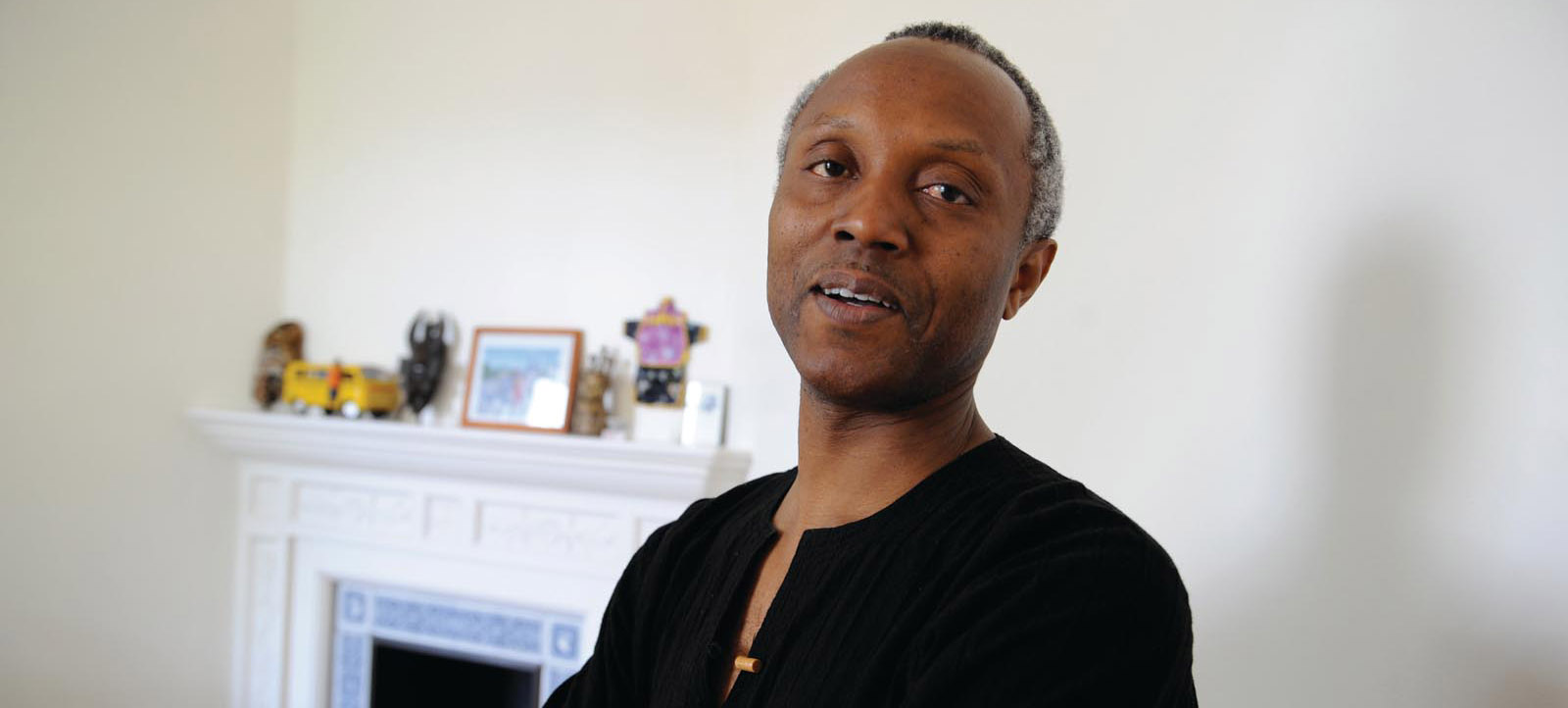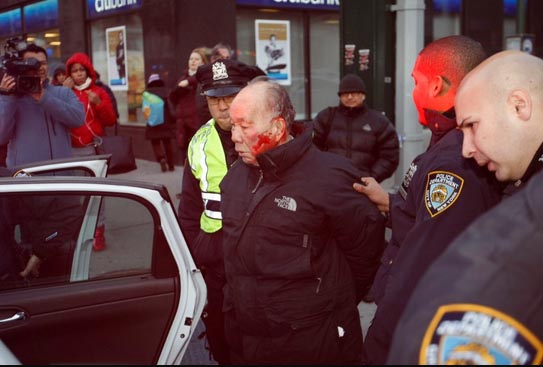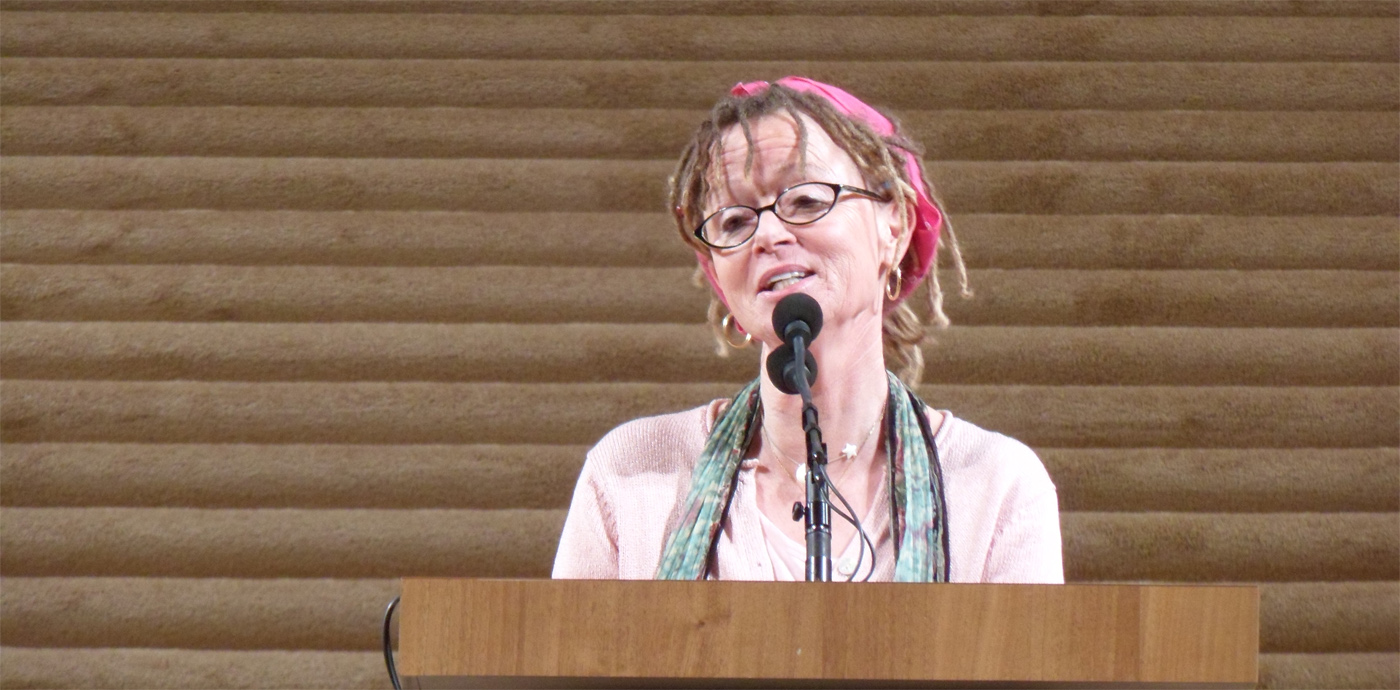Okey Ndibe is most recently the author of Foreign Gods, Inc.
Author: Okey Ndibe
Listen: Play in new window | Download
Subjects Discussed: The tendency of authors to gravitate to specific locations to find a city’s identity, Ndibe’s fictitious village of Utonki, Barclay Center’s encroachment upon Brooklyn, how eating fish can help you to better understand Nigeria, whether or not people who live close to water are more equipped to deal with life, conjuring up a novel from a 1,000 page draft, writing “the Great Nigerian Novel,” the Nigerian census problem, Festus Odiemegwu’s controversial remarks about Nigeria not having a reliable census since 1816, Nigeria as the third most populous nation in the world by the end of the 21st century, what the inability to track a population does to a national identity and a fictional identity, Nigeria as a country where absurdity makes sense, the disastrous Yar-Adua-Goodluck government, Nigeria ascribing honesty to criminals and criminal enterprises that masquerade as governments, Nigeria’s “honest criminals,” Gov. James Ibori’s 13 year sentence, bribery, American vs. Nigerian corruption, why it’s so difficult to end corrupt Nigerian politicians to jail, Ndibe’s arrest at the Lagos Airport, Nigeria’s Enemies of the State list vs. America’s No Fly list, Umaru Musa Yar’Adua and the do-or-die affair, Yar’Adua’s attempts to reach Ndibe after Ndibe refused to address him as President, anonymous messages sent to Ndibe in 2009 threatening arrest, decrying corruption and crime, the state of dissident writing in Nigeria, public and private media distinctions in Nigeria, the influence of journalism upon fiction, the lengthy italicized chapter in Foreign Gods, Inc., the impact of colonialism and religiosity on Nigeria, how certain events can encroach upon a reader’s experience comparable to imperialism, how past relationships between Europe and Nigeria affects current relationships, African artifacts, fuel and oil prices, spiritual implication, religious origins for a fictitious war god, settling on the right types of allegorical men to represent Nigeria, gourmands, poetic talkers, reformed Marxists, religion and performance artists, Igbo religious innovations compared against Christianity, the human qualities of gods in Igbo culture, why orthodoxy is incompatible with Igbo sensibilities, sectarian extremism in Nigeria, jihads against western values, rogue pastors, Nigeria’s 400 to 500 languages, Chinua Achebe’s No Longer at Ease, The Complete Review‘s pedantic review of Foreign Gods, Inc., Africans with considerable educational credentials who can’t get jobs in the United States, the common experience of educated immigrants shut out of the American job market (and trying to pinpoint why contemporary narratives don’t always consider Africans), American exclusion, the role of taste and experience in the editing process, the current renaissance of African fiction, how market conditions affect translated fiction, names and cultural differences, why Nigerian immigrants do better in the States than in England, Ndibe’s debt to Chinua Achebe and Wole Soyinka, Ngugi wa Thiong’o, how Soyinka saved Ndibe’s Christmas, malfunctioning tape recorders, how Achebe brought Ndibe to the United States,
EXCERPT FROM SHOW:
Correspondent: I wanted to start off from a very odd angle. James Joyce had Eccles Street. James Baldwin had, of course, areas of Paris and southern France. I couldn’t help but notice that in Foreign Gods, Inc., in concentrating on both Nigeria and Brooklyn, you look to very specific regions. In the case of southeastern Nigeria — that’s where you’re looking at — you have this fictitious village named Utonki.
Ndibe: Yes.
Correspondent: Which was also featured in Arrows of Rain, your previous book. And then for the Brooklyn stretch, you have 99 Flatbush Avenue, this second-story flat that Ike — I hope I don’t have the ass pronunciation.
Ndibe: It’s actually Eekeh. Ike [correct] is strength. ị́kẹ̀ [incorrect] is the buttocks.
Correspondent: Okay. I’ve got that right. So Ike, he lives in this second-story flat at 99 Flatbush Avenue. And I know that because my book drop is actually not far from there. What’s interesting about that is that if you go there now, you’ve got Barclay Center there. And it’s completely different from whatever regional inspiration you had when you first decided upon it. So I wanted to talk about Utonki and 99 Flatbush Ave as the representative area for which to draw a larger idea about what Nigeria is and what Brooklyn is, and why these particular places were draws for you and why it needed to start there.
Ndibe: Well, for Utonki, I wanted to set a location in Nigeria that is close to my hometown, which is Adamawa. Now in writing my first novel, I am drawn to water, to rivers and so on. And my hometown doesn’t have much by way of the river. We have a few streams. So there is a stream called Benue, which figures in this novel. So Utonki is actually based on a part of Nigeria that I had visited to see a friend of mine from years ago. And I was drawn there because this friend told me that the village is surrounded by this river and they ate a lot of fish. And I’ve always been a sucker for fish. So I went to his village and spent a whole week eating a lot of fish. So this becomes my hommage to this village where I ate fish and which is surrounded by water.
Correspondent: Where did you eat fish in Brooklyn then? (laughs) There’s a fish market downtown.
Ndibe: So in Brooklyn, I actually happened to have a cousin who lives in Brooklyn. And so the apartment and my description of it is my cousin’s apartment. But the address is different. My cousin lives on Lafayette, but I decided to name it a different address in the novel. So again, aware of having something, an image in my mind, but also inventing, as it were.
Correspondent: I’m still drawn to this idea of you in this Nigerian village eating fish and using this to zero in on what the country is about. What does fish eating allow you — and fish eating, of course, is a euphemism for something else as well (laughs) — but what does that do to get you to fixate your geographical energies in fiction? Or your sense of place on what it is to be a Nigerian?
Ndibe: Yes. Well, again, I’m intrigued by bodies of water. I’m intrigued by the ocean, by rivers, by lakes and so on. And so Utonki was, if you like — my mother in Nigeria is from Jimeta, which is on the banks of the river Niger, which is the grand river of Nigeria. And so I’ve always been intrigued by bodies of water, partly because I don’t swim a lake. I can’t swim to save my life. My wife actually was going to represent Nigeria in swimming at the Olympic Games. But I tell people that our winning record is for the fastest to sink to the bottom to any body of water. So in a lot of ways when I see water, or when I see a community with water, there is a part of me that wants to pay hommage to it. And so Utonki, which has a river but also brings me to that fish that I’ve always loved all my life. So if I have an ideal community, if I was going to make myself come from someplace, it would be a place like Utonki. So I invented it. So I would inhabit it, as it were.
Correspondent: This may seem a bizarre question, but it comes to mind in hearing you talk about being near bodies of water. Do you think that people who have a tendency to live near water tend to be more interesting than the people who live inland or who are landlocked?
Ndibe: I believe so. At least those who live close to water. Just like, for me, anybody who can swim becomes exceedingly interesting for me. Which is part of why perhaps I found my wife, Sheri, extraordinarily interesting. Just the fact that she can move with such ease, with such comfort, and with such gusto in water. So, yes, I do believe that those who inhabit the river, who live near bodies of water, are more resourceful. I don’t know if this can hold up to scientific scrutiny.
Correspondent: No.
Ndibe: But in my imaginative world, I think that this is true. Very much so.
Correspondent: It totally makes sense. I mean, I’ve lived pretty much near water in my adult life. I was in San Francisco, then New York. So I think we’re on the same level — even though I also recognize that this is a completely bizarre, tendentious principle. (laughs)
Ndibe: Yes. (laughs)
Correspondent: Speaking of location, I wanted to get into the contrast between Ike’s apartment at 99 Flatbush Ave, which you describe often very specifically. And near the end, we really know the geography of that place. Because some things happen, which I won’t give away, involving furniture. But after Ike’s first trip through the Lagos Airport, you almost avoid describing the look of Nigeria. I mean, we have a better sense also, for example, of the art dealer’s layout than the house late in the book where there’s all this basketball boasting. All these guys saying, “Hey, if you pay me that kind of money, I can go ahead and play like Michael Jordan.” I wanted to ask why that was. Do you think that Nigeria is marked more by this kind of general approach to existence? That, whether consciously or subconsciously, you’re going to just describe the country that way because there just are no specifics. I have a followup in relation to this, but I wanted to get your thoughts as to the level of self-awareness here and what it is to live and describe something that is often abstract.
Ndibe: Yes. Well, first of all, when I finished this novel, it actually came to more than a thousand pages.
Correspondent: Wow!
Ndibe: So there was a lot of editing. A lot of sloughing off huge swaths of the novel. And so when Ike’s plane is hovering over Lagos, there’s a long scene in the original draft of the novel where I describe how he sees Nigeria.
Correspondent: That’s fascinating.
Ndibe: In the original draft, he actually spends a week in Lagos with a friend of his who’s become very wealthy from doing all kinds of underhanded deals with the politicians and so on. And so we get to see Lagos, through Ike’s eyes, as his friend takes him to various parties of the rich and famous in Nigeria. All of those scenes became a casualty, if you like, of this huge cutting process. But that’s going to be worked into a different novel. Because I actually cut about 300 pages from the middle of the novel. And so I had Ike stay that night in a stop-off motel when, in the original draft of the novel, he spends a week in Lagos with this classmate of his who has a lot of money. So that’s one. But once he goes to his village, I guess there’s the sense of familiarity, the sense that he’s returning to a place where he was born. And so I allowed the novel to achieve, if you like, a sense of the unstated. So again, because this is filtered constantly through Ike’s consciousness, the village changes a lot when he returns to it. And there’s this classmate of his, Tony Iba, who has become a very wealthy, local politician and who has a sense that he’s giving back to poor people by building a small room where they can watch television and daydream about American life and so forth. So that kind of absence, if you like, of this particularity in the way that Nigeria is described owes to the process of editing that entailed a lot of cutting of details. And also the fact that Ike wants this in his village, the descriptions become physical locations muted, except in areas where he notes the dramatic changes in that landscape.
The Bat Segundo Show #532: Okey Ndibe (Download MP3)




 It is easy to forget, as brave women
It is easy to forget, as brave women